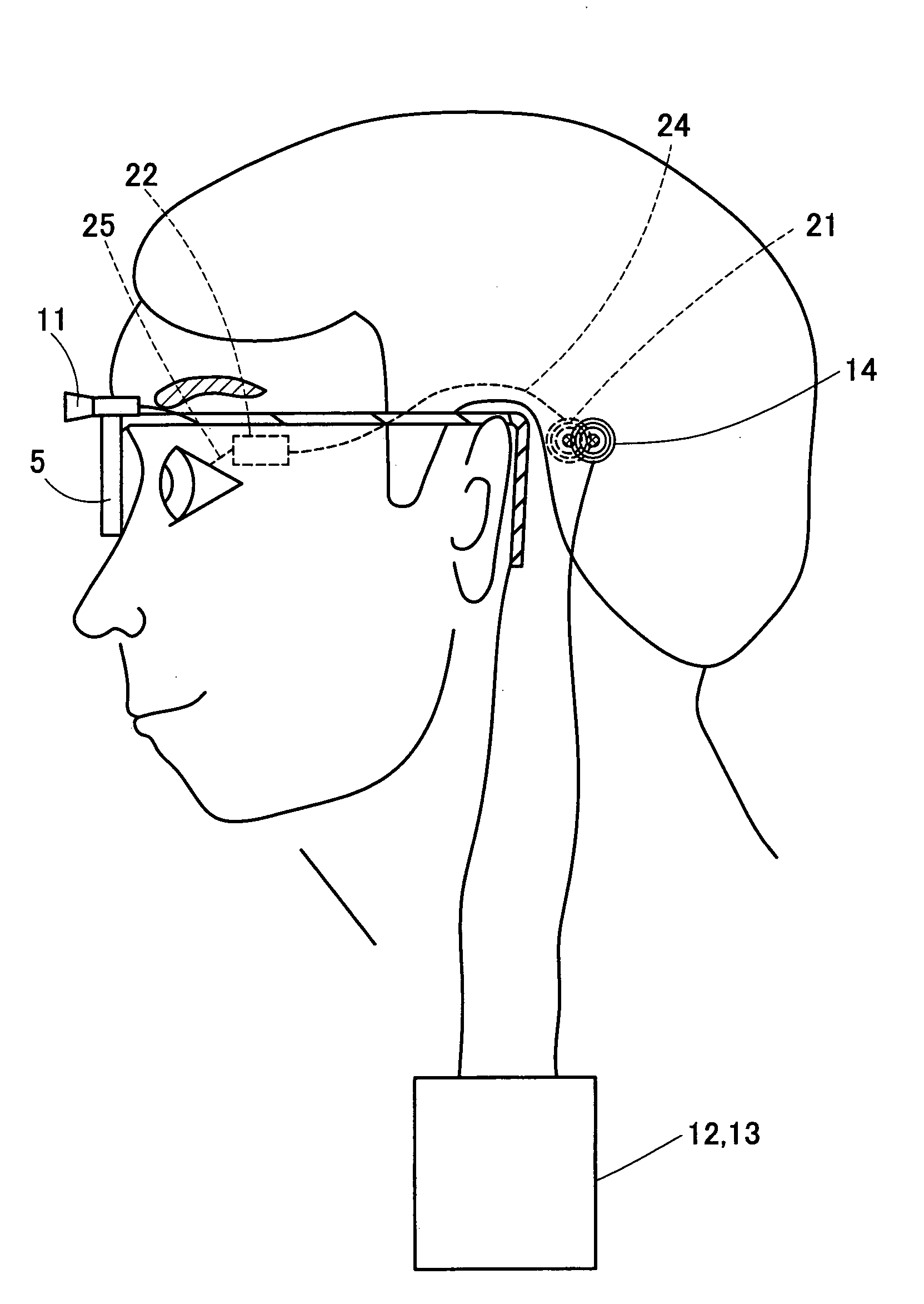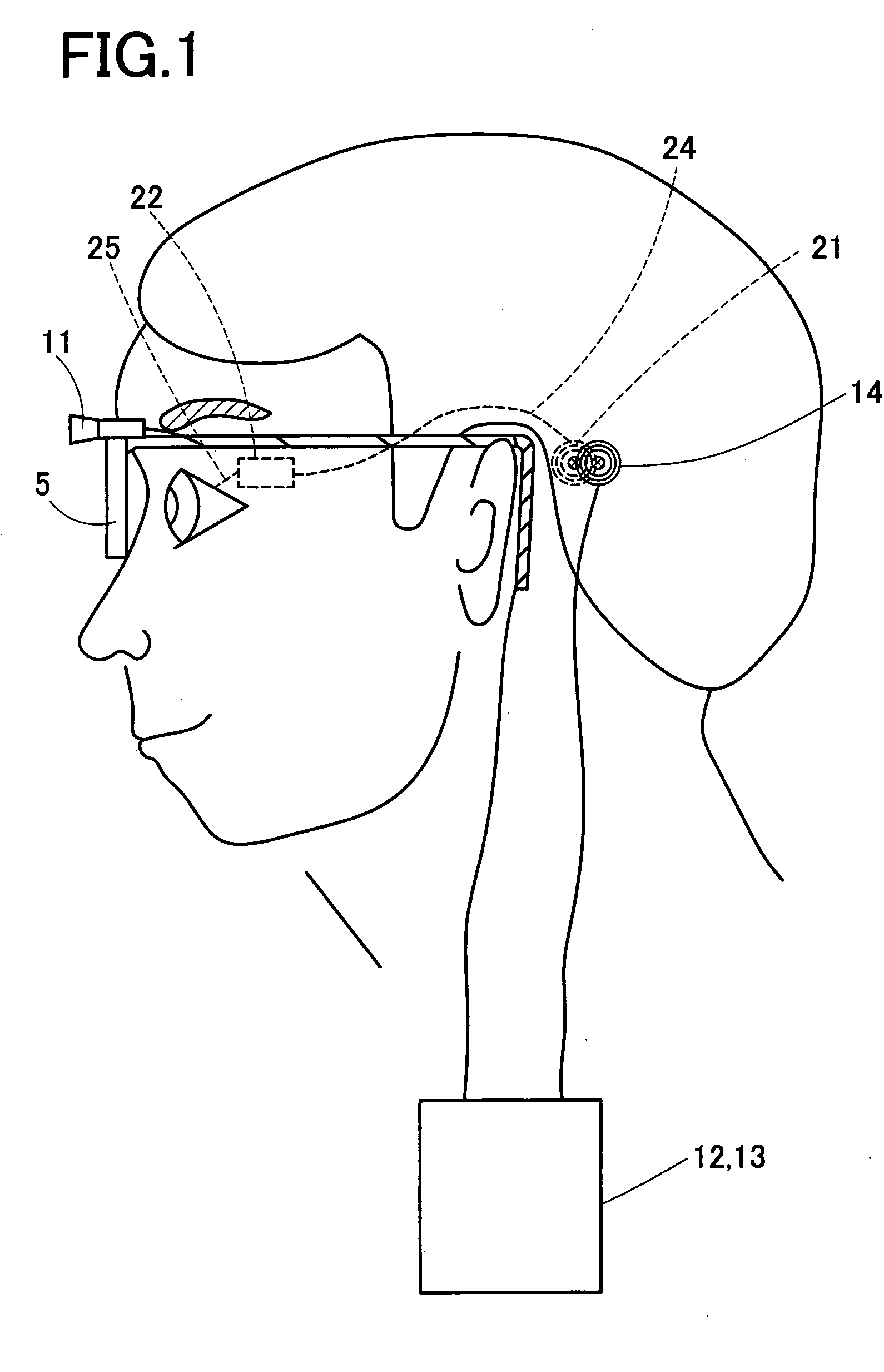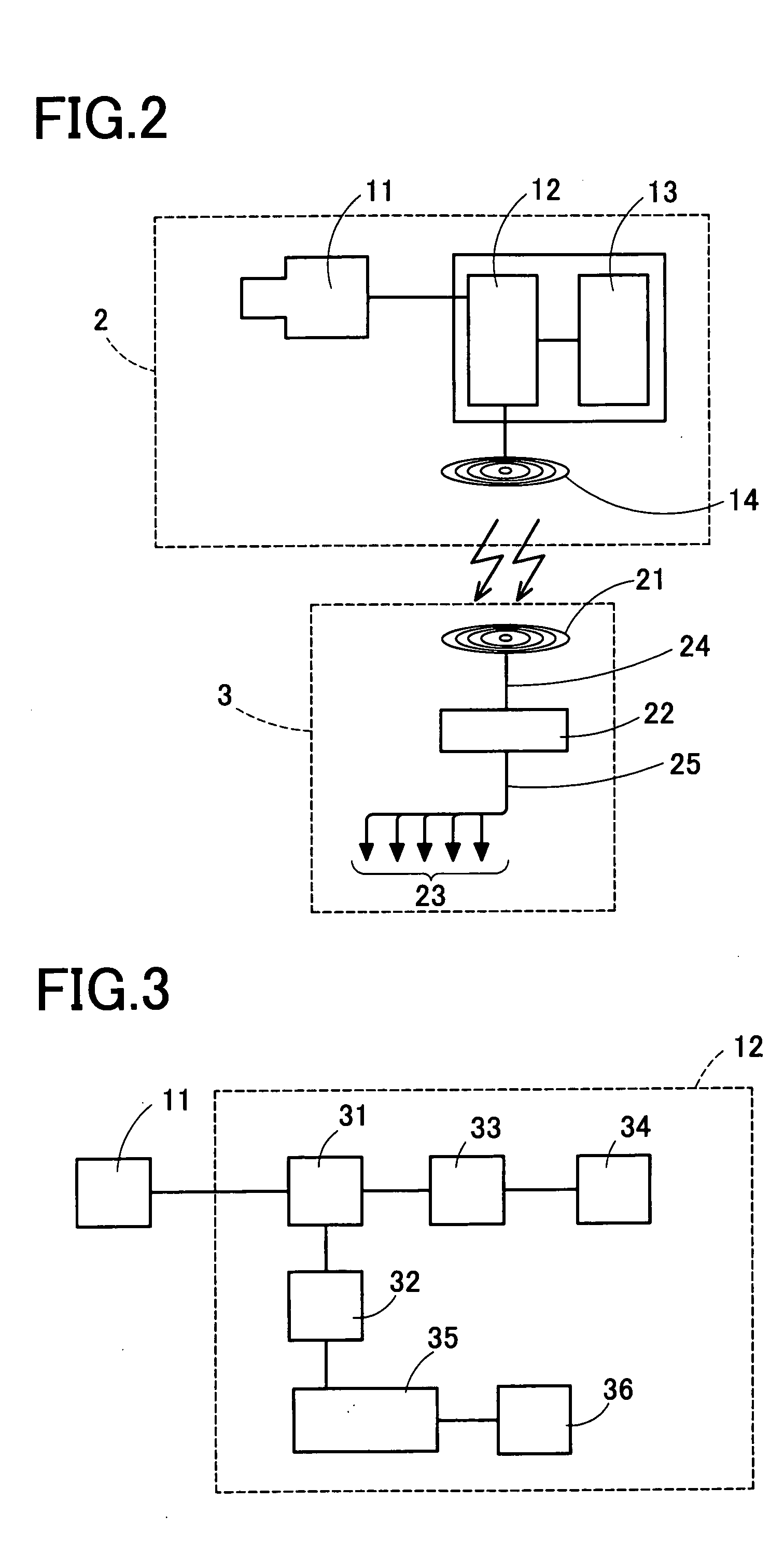Artificail vision system
a vision system and artificial vision technology, applied in the field of artificial vision systems, can solve the problems of reduced or deadened photoreceptor cells, visual defects, advanced blindness, etc., and achieve the effect of increasing the power supply capacity and stable long-term us
- Summary
- Abstract
- Description
- Claims
- Application Information
AI Technical Summary
Benefits of technology
Problems solved by technology
Method used
Image
Examples
Embodiment Construction
[0022] A detailed description of a preferred embodiment of an artificial vision system embodying the present invention will now be given referring to the accompanying drawings. FIG. 1 is a view showing an in-use state of the artificial vision system in the present embodiment. FIG. 2 is a block diagram showing a schematic structure of the artificial vision system.
[0023] The artificial vision system 1 in the present embodiment is constructed of an external device 2 which a patient wears in use and an internal device 3 which is surgically implanted in advance in the patient himself. The external device 2 is arranged such that a camera 11 is mounted on a visor 5 which the patient puts on like glasses to capture a video image of an object space in front of the patient who turns his face. For example, a CCD camera with an image pickup device of tens of thousands of pixels is used as the camera.
[0024] The camera 11 is connected to an image processing device 12 which conducts predetermine...
PUM
 Login to View More
Login to View More Abstract
Description
Claims
Application Information
 Login to View More
Login to View More - R&D
- Intellectual Property
- Life Sciences
- Materials
- Tech Scout
- Unparalleled Data Quality
- Higher Quality Content
- 60% Fewer Hallucinations
Browse by: Latest US Patents, China's latest patents, Technical Efficacy Thesaurus, Application Domain, Technology Topic, Popular Technical Reports.
© 2025 PatSnap. All rights reserved.Legal|Privacy policy|Modern Slavery Act Transparency Statement|Sitemap|About US| Contact US: help@patsnap.com



